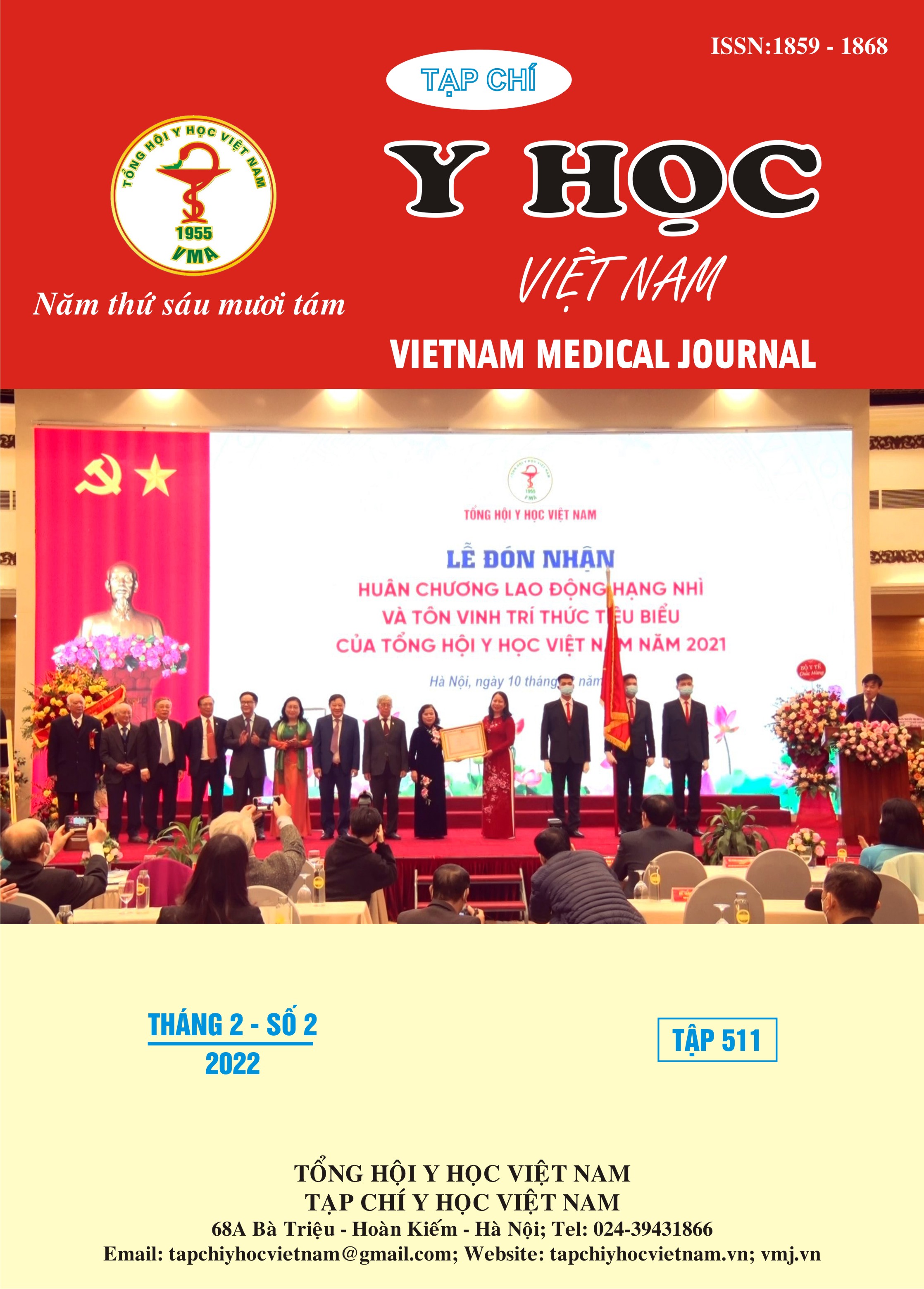STUDY THE CHANGE AND THE CORRELATION BETWEEN MARKERS PIVKA-II, AFP-L3 AND AFP IN HCC PATIENTS HAVING HBsAg (+)
Main Article Content
Abstract
Study objective: to study the change and the correlation between markers PIVKA-II, AFP-L3 and AFP in HCC patients having HbsAg(+). Subjects and methods: A cross-sectional descriptive study was conducted on 86 patients with hepatocarcinoma who had HbsAg (+) and were treated at the National Hospital for Tropical Diseases from 1/2018 to July 2020. Results: Among 86 HCC patients with HBsAg(+), only 50% had AFP >200ng/ml. The percentage of patients with AFP-L3 and PIVKA-II values elevated above the normal limit accounted for 60.7% and 87.8%, respectively. Patients with PIVKA-II concentration in the range of 40-10000 mAU/ml took the highest rate of 59.3%. The case of PIVKA-II concentration > 100000 mAU/ml accounted for 3.5%. - AFP-L3 and PIVKA-II values increased above the normal limit in the group of HCC patients with tumors < 2cm, accounting for 78.9% and 63.2%, respectively; in the group with tumor size from 2 to 5 cm were 66.7% and 93.8% and in the group with tumor size > 5cm were 84.2% and 94.7%, respectively. In the group of HCC patients with thrombosis, AFP-L3 and PIVKA-II were mainly above normal at 81.1% and 97%, respectively. - In the group of HCC patients, the ratio of AFP-L3 and AFP levels had a moderate correlation with r=0.38, p<0.05, Spearman correlation. There is no correlation between PIVKA-II levels with AFP-L3 ratio and with AFP levels in liver cancer patients, Spearman correlation. Conclusion: The combination of testing all three markers AFP-L3, PIVKA-II and AFP helps to diagnose and monitor tumor progression in HBsAg(+) hepatocellular carcinoma patients.
Article Details
Keywords
AFP-L3, PIVKA-II, AFP, HCC, ung thư gan, HBV, HbsAg
References
2. Nguyen HM, Sy BT, Trung NT, et al. Prevalence and genotype distribution of hepatitis delta virus among chronic hepatitis B carriers in Central Vietnam. PLoS One. 2017. 12(4):e0175304. doi:10.1371/journal.pone.0175304.
3. Bộ Y tế. Hướng dẫn chẩn đoán và điều trị bằng Y học hạt nhân. 2014.
4. Rui S, Yan J, Zhang H, Wang Z, Zhou W. Intermediate-stage hepatocellular carcinoma patients with a high HBV-DNA load may benefit from postoperative anti-hepatitis B virus therapy. Medicine. 2017. 96(30):e7608-e7608. doi:10.1097/MD.0000000000007608.
5. Zhang D, Liu Z, Yin X, et al. Prognostic value of PIVKA-II in hepatocellular carcinoma patients receiving curative ablation: A systematic review and meta-analysis. Int J Biol Markers. Aug 2018. 33(3):266-274. doi:10.1177/1724600818760234.
6. Caviglia GP, Abate ML, Petrini E, Gaia S, Rizzetto M, Smedile A. Highly sensitive alpha-fetoprotein, Lens culinaris agglutinin-reactive fraction of alpha-fetoprotein and des-gamma-carboxyprothrombin for hepatocellular carcinoma detection. Hepatol Res. Mar 2016. 46(3):E130-135. doi:10.1111/hepr.12544.
7. Liêu Đậu Quang, Ánh Trần Ngọc. Đánh giá kết quả của AFP-L3 và PIVKA-II trong chẩn đoán ung thư biểu mô tế bào gan. Tạp chí Nghiên cứu Y học. 2017. 2(7).
8. Choi JY, Jung SW, Kim HY, et al. Diagnostic value of AFP-L3 and PIVKA-II in hepatocellular carcinoma according to total-AFP. World J Gastroenterol. Jan 21 2013. 19(3):339-346. doi:10.3748/wjg.v19.i3.339


